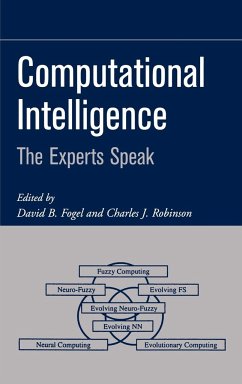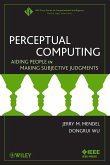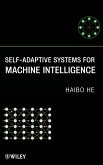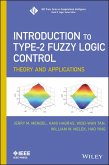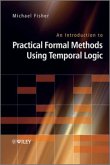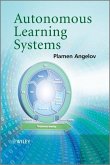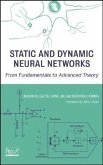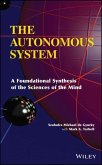David B. Fogel / Charles J. Robinson (Hgg.)The Experts Speak
Computational Intelligence
The Experts Speak
Ed. by David B. Fogel and Charles J. Robinson
David B. Fogel / Charles J. Robinson (Hgg.)The Experts Speak
Computational Intelligence
The Experts Speak
Ed. by David B. Fogel and Charles J. Robinson
- Gebundenes Buch
- Merkliste
- Auf die Merkliste
- Bewerten Bewerten
- Teilen
- Produkt teilen
- Produkterinnerung
- Produkterinnerung
Computational Intelligence is the broad and more technically accurate term used by electrical engineers and computer scientists to describe the overlapping technical interest areas (neural networks, fuzzy logic systems, evolutionary computation) that would be more readily identified by non-technologists as artificial intelligence. The synergy between these fields is creating new applications and fields of study, e.g. "Face Recognition Software" an application of the study of Biometrics. MATLAB was developed from these same areas and it is now a common tool used by mathematicians and scientists…mehr
Andere Kunden interessierten sich auch für
![Perceptual Computing Perceptual Computing]() Jerry MendelPerceptual Computing119,99 €
Jerry MendelPerceptual Computing119,99 €![Machine Intelligence Machine Intelligence]() Haibo HeMachine Intelligence101,99 €
Haibo HeMachine Intelligence101,99 €![Introduction to Type-2 Fuzzy Logic Control Introduction to Type-2 Fuzzy Logic Control]() Jerry MendelIntroduction to Type-2 Fuzzy Logic Control134,99 €
Jerry MendelIntroduction to Type-2 Fuzzy Logic Control134,99 €![An Introduction to Practical Formal Methods Using Temporal Logic An Introduction to Practical Formal Methods Using Temporal Logic]() Michael FisherAn Introduction to Practical Formal Methods Using Temporal Logic127,99 €
Michael FisherAn Introduction to Practical Formal Methods Using Temporal Logic127,99 €![Autonomous Learning Systems Autonomous Learning Systems]() Plamen AngelovAutonomous Learning Systems138,99 €
Plamen AngelovAutonomous Learning Systems138,99 €![Static and Dynamic Neural Networks Static and Dynamic Neural Networks]() Madan GuptaStatic and Dynamic Neural Networks237,99 €
Madan GuptaStatic and Dynamic Neural Networks237,99 €![The Autonomous System The Autonomous System]() Szabolcs Michael de GyurkyThe Autonomous System122,99 €
Szabolcs Michael de GyurkyThe Autonomous System122,99 €-
-
-
Computational Intelligence is the broad and more technically accurate term used by electrical engineers and computer scientists to describe the overlapping technical interest areas (neural networks, fuzzy logic systems, evolutionary computation) that would be more readily identified by non-technologists as artificial intelligence. The synergy between these fields is creating new applications and fields of study, e.g. "Face Recognition Software" an application of the study of Biometrics. MATLAB was developed from these same areas and it is now a common tool used by mathematicians and scientists for research. Fitting computational intelligence components into an application or developing a new technology requires knowledge of the separate units and their various components. Consisting of expanded papers generated by the plenary and invited lecturers from the WCCI, plus transitions and introductory chapters, this new volume addresses the fundamental issues of computational intelligence.
_ Computational intelligence is the term used by computer scientists to describe the overlapping technical interest areas that would be more readily identified by nontechnologists as AI
_ Includes past, present, and future examples of applications developed from computational intelligence studies
_ The editors and contributors are the leaders in the CI community writing in their respective fields of expertise
_ Computational intelligence is the term used by computer scientists to describe the overlapping technical interest areas that would be more readily identified by nontechnologists as AI
_ Includes past, present, and future examples of applications developed from computational intelligence studies
_ The editors and contributors are the leaders in the CI community writing in their respective fields of expertise
Produktdetails
- Produktdetails
- Verlag: Wiley & Sons
- 1. Auflage
- Seitenzahl: 304
- Erscheinungstermin: 16. Juni 2003
- Englisch
- Abmessung: 240mm x 161mm x 21mm
- Gewicht: 628g
- ISBN-13: 9780471274544
- ISBN-10: 0471274542
- Artikelnr.: 11425235
- Herstellerkennzeichnung
- Libri GmbH
- Europaallee 1
- 36244 Bad Hersfeld
- gpsr@libri.de
- Verlag: Wiley & Sons
- 1. Auflage
- Seitenzahl: 304
- Erscheinungstermin: 16. Juni 2003
- Englisch
- Abmessung: 240mm x 161mm x 21mm
- Gewicht: 628g
- ISBN-13: 9780471274544
- ISBN-10: 0471274542
- Artikelnr.: 11425235
- Herstellerkennzeichnung
- Libri GmbH
- Europaallee 1
- 36244 Bad Hersfeld
- gpsr@libri.de
David B. Fogel, PhD, is the Chief Executive Officer of Natural Selection Inc. and was the general chairman of the 2002 IEEE World Congress on Computational Intelligence. Charles J. Robinson, DSc, PE, is Director of the University Center for Biomedical Engineering and Rehabilitation Science at Louisiana Tech University and a Senior Rehabilitation Research Career Scientist with the Shreveport, LA, Veterans Affairs Medical Center. He served as plenary chairman of the 2002 IEEE World Congress on Computational Intelligence.
CONTRIBUTORS.
PREFACE.
1. THREE GENERATIONS OF COEVOLUTIONARY ROBOTICS (Jordan B. Pollack, Hod
Lipson, Pablo Funes, and Gregory Hornby).
1.1 Roboeconomics.
1.2 Coevolution.
1.3 Research Thrusts.
1.4 Conclusion.
Acknowledgments.
References.
2. BEYOND 2001: THE LINGUISTIC SPATIAL ODYSSEY (James M. Keller, Pascal
Matsakis, and Marjorie Skubic).
2.1 Introduction.
2.2 Force Histograms and Linguistic Scene Description.
2.3 Scene Matching.
2.4 Human-Robot Dialog.
2.5 Sketched Route Map Understanding.
2.6 The Future.
Acknowledgments.
References.
3. COMPUTING MACHINERY AND INTELLIGENCE AMPLIFICATION (Steven K. Rogers,
Matthew Kabrisky, Kenneth Bauer, and Mark E. Oxley).
3.1 Introduction.
3.2 Estimating Intelligence.
3.3 Turing Test and Intelligence Amplification.
3.4 Measuring Intelligence Amplification.
3.5 The Future of Intelligence Amplification.
References.
4. VISUALIZING COMPLEXITY IN THE BRAIN (Lloyd Watts).
4.1 Introduction.
4.2 Neuroscience Knowledge.
4.3 Computing Technology.
4.4 Nontechnical Issues.
4.5 Conclusions.
References.
5. EMERGING TECHNOLOGIES: ONR'S NEED FOR INTELLIGENT COMPUTATION IN
UNDERWATER SENSORS (James F. McEachern and Robert T. Miyamoto).
5.1 Introduction.
5.2 Background.
5.3 The Challenge.
5.4 Current Applications.
5.5 Future.
5.6 Summary.
References.
6. BEYOND VOLTERRA AND WIENER: OPTIMAL MODELING OF NONLINEAR DYNAMICAL
SYSTEMS IN A NEURAL SPACE FOR APPLICATIONS IN COMPUTATIONAL INTELLIGENCE
(Rui J. P. de Figueiredo).
6.1 Introduction.
6.2 Classes of Nonlinear Dynamical System Models.
6.3 The de Figueiredo-Dwyer-Zyla Space F.
6.4 Derivation of Sigmoid Functionals.
6.5 Best Robust Approximation of f in the Neural Space N.
6.6 Optimal Combined Structural and Parametric Modeling of Nonlinear
Dynamical Systems in N.
6.7 Computationally Intelligent (CI) Systems.
6.8 Concluding Remarks.
References.
7. TECHNIQUES FOR EXTRACTING CLASSIFICATION AND REGRESSION RULES FROM
ARTIFICIAL NEURAL NETWORKS (Rudy Setiono).
7.1 Introduction.
7.2 Rule Extraction.
7.3 Illustrative Examples.
7.4 Conclusion.
References.
8. NEURAL NETWORKS FOR CONTROL: RESEARCH OPPORTUNITIES AND RECENT
DEVELOPMENTS (Paul J. Werbos).
8.1 The Challenge to Researchers: Context and Motivation.
8.2 A Specific Challenge and Associated Issues.
8.3 Strategies, Tasks, and Tools.
References.
9. INTELLIGENT LEARNING ROBOTIC SYSTEMS USING COMPUTATIONAL INTELLIGENCE
(Toshio Fukuda and Naoyuki Kubota).
9.1 Introduction.
9.2 Motion Planning and Behavior Acquisition of Robots.
9.3 Emerging Synthesis of Computational Intelligence.
9.4 Intelligence on Robotic Systems.
9.5 Structured Intelligence for Robotic Systems.
9.6 Concluding Remarks.
References.
10. COMPUTATIONAL INTELLIGENCE IN LOGISTICS (Hans-Jürgen Zimmermann).
10.1 Introduction.
10.2 Traffic Management.
10.3 Fleet Management.
10.4 In-House Logistics.
10.5 Conclusions.
References.
11. TWO NEW CONVERGENCE RESULTS FOR ALTERNATING OPTIMIZATION (James C.
Bezdek and Richard J. Hathaway).
11.1 Iterative Optimization.
11.2 Existence and Uniqueness.
11.3 The Alternating Optimization Algorithm.
11.4 When Is Alternating Optimization a Good Choice?
11.5 How Do We Solve (11.1)?
11.6 Local Convergence of Alternating Optimization.
11.7 Global Convergence of AO.
11.8 Conclusions.
Acknowledgment.
References.
12. CONSTRUCTIVE DESIGN OF A DISCRETE-TIME FUZZY CONTROLLER BASED ON
PIECEWISE-LYAPUNOV FUNCTIONS (Gang Feng, Dong Sun, and Louis Wang).
12.1 Introduction.
12.2 Fuzzy Dynamic Model and Its Piecewise-Quadratic Stability.
12.3 Controller Synthesis of Fuzzy Dynamic Systems.
12.4 Simulation Examples.
12.5 Conclusions.
Acknowledgments.
References.
Appendix.
13. EVOLUTIONARY COMPUTATION AND COGNITIVE SCIENCE (Janet Wiles and
Jennifer Hallinan).
13.1 Cognitive Science: What's on Your Mind?
13.2 Case Studies in Evolutionary Computation and Cognitive Science.
13.3 Summary.
References.
14. EVOLVABLE HARDWARE AND ITS APPLICATIONS (T. Higuchi, E. Takahashi, Y.
Kasai, T. Itatani, M. Iwata, H. Sakanashi, M. Murakawa, I. Kajitani, and H.
Nosato).
14.1 Introduction.
14.2 Myoelectric Prosthetic Hand Controller with EHW.
14.3 Data-Compression Chip for Printing Image Data.
14.4 Analog EHW Chip for Cellular Phone.
14.5 An EHW-Based Clock-Timing Adjusting Chip.
14.6 Evolvable Optical Systems and Their Application.
14.7 Current Research on EHW.
References.
15. HUMANIZED COMPUTATIONAL INTELLIGENCE WITH INTERACTIVE EVOLUTIONARY
COMPUTATION (Hideyuki Takagi).
15.1 Introduction.
15.2 Humanized Computational Intelligence.
15.3 Interactive Evolutionary Computation.
15.4 Conclusion.
References.
16. UNSUPERVISED LEARNING BY ARTIFICIAL NEURAL NETWORKS (Harold Szu).
16.1 A New Challenge: Space-Variant Unsupervised Classifications.
16.2 Power of Pairs: Vector versus Scalar Data.
16.3 Generalization of Shannon's Entropy Information Theory to Open
Systems.
16.4 Benchmarks of Space-Variant Unsupervised Classification.
16.5 Multispectral Medical Imaging.
16.6 Multispectral Remote Sensing.
16.7 Biological Relevance.
16.8 Conclusion.
Acknowledgments.
References.
17. COLLECTIVE INTELLIGENCE (David H. Wolpert).
17.1 Motivation and Background.
17.2 The Mathematics of Designing Collectives.
17.3 Tests of the Mathematics.
17.4 Conclusion.
References.
18. BACKPROPAGATION: GENERAL PRINCIPLES AND ISSUES FOR BIOLOGY (Paul J.
Werbos).
18.1 Introduction.
18.2 The Chain Rule for Ordered Derivatives.
18.3 Backpropagation for Supervised Learning.
18.4 Discussion and Future Research.
References.
INDEX.
ABOUT THE EDITORS.
PREFACE.
1. THREE GENERATIONS OF COEVOLUTIONARY ROBOTICS (Jordan B. Pollack, Hod
Lipson, Pablo Funes, and Gregory Hornby).
1.1 Roboeconomics.
1.2 Coevolution.
1.3 Research Thrusts.
1.4 Conclusion.
Acknowledgments.
References.
2. BEYOND 2001: THE LINGUISTIC SPATIAL ODYSSEY (James M. Keller, Pascal
Matsakis, and Marjorie Skubic).
2.1 Introduction.
2.2 Force Histograms and Linguistic Scene Description.
2.3 Scene Matching.
2.4 Human-Robot Dialog.
2.5 Sketched Route Map Understanding.
2.6 The Future.
Acknowledgments.
References.
3. COMPUTING MACHINERY AND INTELLIGENCE AMPLIFICATION (Steven K. Rogers,
Matthew Kabrisky, Kenneth Bauer, and Mark E. Oxley).
3.1 Introduction.
3.2 Estimating Intelligence.
3.3 Turing Test and Intelligence Amplification.
3.4 Measuring Intelligence Amplification.
3.5 The Future of Intelligence Amplification.
References.
4. VISUALIZING COMPLEXITY IN THE BRAIN (Lloyd Watts).
4.1 Introduction.
4.2 Neuroscience Knowledge.
4.3 Computing Technology.
4.4 Nontechnical Issues.
4.5 Conclusions.
References.
5. EMERGING TECHNOLOGIES: ONR'S NEED FOR INTELLIGENT COMPUTATION IN
UNDERWATER SENSORS (James F. McEachern and Robert T. Miyamoto).
5.1 Introduction.
5.2 Background.
5.3 The Challenge.
5.4 Current Applications.
5.5 Future.
5.6 Summary.
References.
6. BEYOND VOLTERRA AND WIENER: OPTIMAL MODELING OF NONLINEAR DYNAMICAL
SYSTEMS IN A NEURAL SPACE FOR APPLICATIONS IN COMPUTATIONAL INTELLIGENCE
(Rui J. P. de Figueiredo).
6.1 Introduction.
6.2 Classes of Nonlinear Dynamical System Models.
6.3 The de Figueiredo-Dwyer-Zyla Space F.
6.4 Derivation of Sigmoid Functionals.
6.5 Best Robust Approximation of f in the Neural Space N.
6.6 Optimal Combined Structural and Parametric Modeling of Nonlinear
Dynamical Systems in N.
6.7 Computationally Intelligent (CI) Systems.
6.8 Concluding Remarks.
References.
7. TECHNIQUES FOR EXTRACTING CLASSIFICATION AND REGRESSION RULES FROM
ARTIFICIAL NEURAL NETWORKS (Rudy Setiono).
7.1 Introduction.
7.2 Rule Extraction.
7.3 Illustrative Examples.
7.4 Conclusion.
References.
8. NEURAL NETWORKS FOR CONTROL: RESEARCH OPPORTUNITIES AND RECENT
DEVELOPMENTS (Paul J. Werbos).
8.1 The Challenge to Researchers: Context and Motivation.
8.2 A Specific Challenge and Associated Issues.
8.3 Strategies, Tasks, and Tools.
References.
9. INTELLIGENT LEARNING ROBOTIC SYSTEMS USING COMPUTATIONAL INTELLIGENCE
(Toshio Fukuda and Naoyuki Kubota).
9.1 Introduction.
9.2 Motion Planning and Behavior Acquisition of Robots.
9.3 Emerging Synthesis of Computational Intelligence.
9.4 Intelligence on Robotic Systems.
9.5 Structured Intelligence for Robotic Systems.
9.6 Concluding Remarks.
References.
10. COMPUTATIONAL INTELLIGENCE IN LOGISTICS (Hans-Jürgen Zimmermann).
10.1 Introduction.
10.2 Traffic Management.
10.3 Fleet Management.
10.4 In-House Logistics.
10.5 Conclusions.
References.
11. TWO NEW CONVERGENCE RESULTS FOR ALTERNATING OPTIMIZATION (James C.
Bezdek and Richard J. Hathaway).
11.1 Iterative Optimization.
11.2 Existence and Uniqueness.
11.3 The Alternating Optimization Algorithm.
11.4 When Is Alternating Optimization a Good Choice?
11.5 How Do We Solve (11.1)?
11.6 Local Convergence of Alternating Optimization.
11.7 Global Convergence of AO.
11.8 Conclusions.
Acknowledgment.
References.
12. CONSTRUCTIVE DESIGN OF A DISCRETE-TIME FUZZY CONTROLLER BASED ON
PIECEWISE-LYAPUNOV FUNCTIONS (Gang Feng, Dong Sun, and Louis Wang).
12.1 Introduction.
12.2 Fuzzy Dynamic Model and Its Piecewise-Quadratic Stability.
12.3 Controller Synthesis of Fuzzy Dynamic Systems.
12.4 Simulation Examples.
12.5 Conclusions.
Acknowledgments.
References.
Appendix.
13. EVOLUTIONARY COMPUTATION AND COGNITIVE SCIENCE (Janet Wiles and
Jennifer Hallinan).
13.1 Cognitive Science: What's on Your Mind?
13.2 Case Studies in Evolutionary Computation and Cognitive Science.
13.3 Summary.
References.
14. EVOLVABLE HARDWARE AND ITS APPLICATIONS (T. Higuchi, E. Takahashi, Y.
Kasai, T. Itatani, M. Iwata, H. Sakanashi, M. Murakawa, I. Kajitani, and H.
Nosato).
14.1 Introduction.
14.2 Myoelectric Prosthetic Hand Controller with EHW.
14.3 Data-Compression Chip for Printing Image Data.
14.4 Analog EHW Chip for Cellular Phone.
14.5 An EHW-Based Clock-Timing Adjusting Chip.
14.6 Evolvable Optical Systems and Their Application.
14.7 Current Research on EHW.
References.
15. HUMANIZED COMPUTATIONAL INTELLIGENCE WITH INTERACTIVE EVOLUTIONARY
COMPUTATION (Hideyuki Takagi).
15.1 Introduction.
15.2 Humanized Computational Intelligence.
15.3 Interactive Evolutionary Computation.
15.4 Conclusion.
References.
16. UNSUPERVISED LEARNING BY ARTIFICIAL NEURAL NETWORKS (Harold Szu).
16.1 A New Challenge: Space-Variant Unsupervised Classifications.
16.2 Power of Pairs: Vector versus Scalar Data.
16.3 Generalization of Shannon's Entropy Information Theory to Open
Systems.
16.4 Benchmarks of Space-Variant Unsupervised Classification.
16.5 Multispectral Medical Imaging.
16.6 Multispectral Remote Sensing.
16.7 Biological Relevance.
16.8 Conclusion.
Acknowledgments.
References.
17. COLLECTIVE INTELLIGENCE (David H. Wolpert).
17.1 Motivation and Background.
17.2 The Mathematics of Designing Collectives.
17.3 Tests of the Mathematics.
17.4 Conclusion.
References.
18. BACKPROPAGATION: GENERAL PRINCIPLES AND ISSUES FOR BIOLOGY (Paul J.
Werbos).
18.1 Introduction.
18.2 The Chain Rule for Ordered Derivatives.
18.3 Backpropagation for Supervised Learning.
18.4 Discussion and Future Research.
References.
INDEX.
ABOUT THE EDITORS.
CONTRIBUTORS.
PREFACE.
1. THREE GENERATIONS OF COEVOLUTIONARY ROBOTICS (Jordan B. Pollack, Hod
Lipson, Pablo Funes, and Gregory Hornby).
1.1 Roboeconomics.
1.2 Coevolution.
1.3 Research Thrusts.
1.4 Conclusion.
Acknowledgments.
References.
2. BEYOND 2001: THE LINGUISTIC SPATIAL ODYSSEY (James M. Keller, Pascal
Matsakis, and Marjorie Skubic).
2.1 Introduction.
2.2 Force Histograms and Linguistic Scene Description.
2.3 Scene Matching.
2.4 Human-Robot Dialog.
2.5 Sketched Route Map Understanding.
2.6 The Future.
Acknowledgments.
References.
3. COMPUTING MACHINERY AND INTELLIGENCE AMPLIFICATION (Steven K. Rogers,
Matthew Kabrisky, Kenneth Bauer, and Mark E. Oxley).
3.1 Introduction.
3.2 Estimating Intelligence.
3.3 Turing Test and Intelligence Amplification.
3.4 Measuring Intelligence Amplification.
3.5 The Future of Intelligence Amplification.
References.
4. VISUALIZING COMPLEXITY IN THE BRAIN (Lloyd Watts).
4.1 Introduction.
4.2 Neuroscience Knowledge.
4.3 Computing Technology.
4.4 Nontechnical Issues.
4.5 Conclusions.
References.
5. EMERGING TECHNOLOGIES: ONR'S NEED FOR INTELLIGENT COMPUTATION IN
UNDERWATER SENSORS (James F. McEachern and Robert T. Miyamoto).
5.1 Introduction.
5.2 Background.
5.3 The Challenge.
5.4 Current Applications.
5.5 Future.
5.6 Summary.
References.
6. BEYOND VOLTERRA AND WIENER: OPTIMAL MODELING OF NONLINEAR DYNAMICAL
SYSTEMS IN A NEURAL SPACE FOR APPLICATIONS IN COMPUTATIONAL INTELLIGENCE
(Rui J. P. de Figueiredo).
6.1 Introduction.
6.2 Classes of Nonlinear Dynamical System Models.
6.3 The de Figueiredo-Dwyer-Zyla Space F.
6.4 Derivation of Sigmoid Functionals.
6.5 Best Robust Approximation of f in the Neural Space N.
6.6 Optimal Combined Structural and Parametric Modeling of Nonlinear
Dynamical Systems in N.
6.7 Computationally Intelligent (CI) Systems.
6.8 Concluding Remarks.
References.
7. TECHNIQUES FOR EXTRACTING CLASSIFICATION AND REGRESSION RULES FROM
ARTIFICIAL NEURAL NETWORKS (Rudy Setiono).
7.1 Introduction.
7.2 Rule Extraction.
7.3 Illustrative Examples.
7.4 Conclusion.
References.
8. NEURAL NETWORKS FOR CONTROL: RESEARCH OPPORTUNITIES AND RECENT
DEVELOPMENTS (Paul J. Werbos).
8.1 The Challenge to Researchers: Context and Motivation.
8.2 A Specific Challenge and Associated Issues.
8.3 Strategies, Tasks, and Tools.
References.
9. INTELLIGENT LEARNING ROBOTIC SYSTEMS USING COMPUTATIONAL INTELLIGENCE
(Toshio Fukuda and Naoyuki Kubota).
9.1 Introduction.
9.2 Motion Planning and Behavior Acquisition of Robots.
9.3 Emerging Synthesis of Computational Intelligence.
9.4 Intelligence on Robotic Systems.
9.5 Structured Intelligence for Robotic Systems.
9.6 Concluding Remarks.
References.
10. COMPUTATIONAL INTELLIGENCE IN LOGISTICS (Hans-Jürgen Zimmermann).
10.1 Introduction.
10.2 Traffic Management.
10.3 Fleet Management.
10.4 In-House Logistics.
10.5 Conclusions.
References.
11. TWO NEW CONVERGENCE RESULTS FOR ALTERNATING OPTIMIZATION (James C.
Bezdek and Richard J. Hathaway).
11.1 Iterative Optimization.
11.2 Existence and Uniqueness.
11.3 The Alternating Optimization Algorithm.
11.4 When Is Alternating Optimization a Good Choice?
11.5 How Do We Solve (11.1)?
11.6 Local Convergence of Alternating Optimization.
11.7 Global Convergence of AO.
11.8 Conclusions.
Acknowledgment.
References.
12. CONSTRUCTIVE DESIGN OF A DISCRETE-TIME FUZZY CONTROLLER BASED ON
PIECEWISE-LYAPUNOV FUNCTIONS (Gang Feng, Dong Sun, and Louis Wang).
12.1 Introduction.
12.2 Fuzzy Dynamic Model and Its Piecewise-Quadratic Stability.
12.3 Controller Synthesis of Fuzzy Dynamic Systems.
12.4 Simulation Examples.
12.5 Conclusions.
Acknowledgments.
References.
Appendix.
13. EVOLUTIONARY COMPUTATION AND COGNITIVE SCIENCE (Janet Wiles and
Jennifer Hallinan).
13.1 Cognitive Science: What's on Your Mind?
13.2 Case Studies in Evolutionary Computation and Cognitive Science.
13.3 Summary.
References.
14. EVOLVABLE HARDWARE AND ITS APPLICATIONS (T. Higuchi, E. Takahashi, Y.
Kasai, T. Itatani, M. Iwata, H. Sakanashi, M. Murakawa, I. Kajitani, and H.
Nosato).
14.1 Introduction.
14.2 Myoelectric Prosthetic Hand Controller with EHW.
14.3 Data-Compression Chip for Printing Image Data.
14.4 Analog EHW Chip for Cellular Phone.
14.5 An EHW-Based Clock-Timing Adjusting Chip.
14.6 Evolvable Optical Systems and Their Application.
14.7 Current Research on EHW.
References.
15. HUMANIZED COMPUTATIONAL INTELLIGENCE WITH INTERACTIVE EVOLUTIONARY
COMPUTATION (Hideyuki Takagi).
15.1 Introduction.
15.2 Humanized Computational Intelligence.
15.3 Interactive Evolutionary Computation.
15.4 Conclusion.
References.
16. UNSUPERVISED LEARNING BY ARTIFICIAL NEURAL NETWORKS (Harold Szu).
16.1 A New Challenge: Space-Variant Unsupervised Classifications.
16.2 Power of Pairs: Vector versus Scalar Data.
16.3 Generalization of Shannon's Entropy Information Theory to Open
Systems.
16.4 Benchmarks of Space-Variant Unsupervised Classification.
16.5 Multispectral Medical Imaging.
16.6 Multispectral Remote Sensing.
16.7 Biological Relevance.
16.8 Conclusion.
Acknowledgments.
References.
17. COLLECTIVE INTELLIGENCE (David H. Wolpert).
17.1 Motivation and Background.
17.2 The Mathematics of Designing Collectives.
17.3 Tests of the Mathematics.
17.4 Conclusion.
References.
18. BACKPROPAGATION: GENERAL PRINCIPLES AND ISSUES FOR BIOLOGY (Paul J.
Werbos).
18.1 Introduction.
18.2 The Chain Rule for Ordered Derivatives.
18.3 Backpropagation for Supervised Learning.
18.4 Discussion and Future Research.
References.
INDEX.
ABOUT THE EDITORS.
PREFACE.
1. THREE GENERATIONS OF COEVOLUTIONARY ROBOTICS (Jordan B. Pollack, Hod
Lipson, Pablo Funes, and Gregory Hornby).
1.1 Roboeconomics.
1.2 Coevolution.
1.3 Research Thrusts.
1.4 Conclusion.
Acknowledgments.
References.
2. BEYOND 2001: THE LINGUISTIC SPATIAL ODYSSEY (James M. Keller, Pascal
Matsakis, and Marjorie Skubic).
2.1 Introduction.
2.2 Force Histograms and Linguistic Scene Description.
2.3 Scene Matching.
2.4 Human-Robot Dialog.
2.5 Sketched Route Map Understanding.
2.6 The Future.
Acknowledgments.
References.
3. COMPUTING MACHINERY AND INTELLIGENCE AMPLIFICATION (Steven K. Rogers,
Matthew Kabrisky, Kenneth Bauer, and Mark E. Oxley).
3.1 Introduction.
3.2 Estimating Intelligence.
3.3 Turing Test and Intelligence Amplification.
3.4 Measuring Intelligence Amplification.
3.5 The Future of Intelligence Amplification.
References.
4. VISUALIZING COMPLEXITY IN THE BRAIN (Lloyd Watts).
4.1 Introduction.
4.2 Neuroscience Knowledge.
4.3 Computing Technology.
4.4 Nontechnical Issues.
4.5 Conclusions.
References.
5. EMERGING TECHNOLOGIES: ONR'S NEED FOR INTELLIGENT COMPUTATION IN
UNDERWATER SENSORS (James F. McEachern and Robert T. Miyamoto).
5.1 Introduction.
5.2 Background.
5.3 The Challenge.
5.4 Current Applications.
5.5 Future.
5.6 Summary.
References.
6. BEYOND VOLTERRA AND WIENER: OPTIMAL MODELING OF NONLINEAR DYNAMICAL
SYSTEMS IN A NEURAL SPACE FOR APPLICATIONS IN COMPUTATIONAL INTELLIGENCE
(Rui J. P. de Figueiredo).
6.1 Introduction.
6.2 Classes of Nonlinear Dynamical System Models.
6.3 The de Figueiredo-Dwyer-Zyla Space F.
6.4 Derivation of Sigmoid Functionals.
6.5 Best Robust Approximation of f in the Neural Space N.
6.6 Optimal Combined Structural and Parametric Modeling of Nonlinear
Dynamical Systems in N.
6.7 Computationally Intelligent (CI) Systems.
6.8 Concluding Remarks.
References.
7. TECHNIQUES FOR EXTRACTING CLASSIFICATION AND REGRESSION RULES FROM
ARTIFICIAL NEURAL NETWORKS (Rudy Setiono).
7.1 Introduction.
7.2 Rule Extraction.
7.3 Illustrative Examples.
7.4 Conclusion.
References.
8. NEURAL NETWORKS FOR CONTROL: RESEARCH OPPORTUNITIES AND RECENT
DEVELOPMENTS (Paul J. Werbos).
8.1 The Challenge to Researchers: Context and Motivation.
8.2 A Specific Challenge and Associated Issues.
8.3 Strategies, Tasks, and Tools.
References.
9. INTELLIGENT LEARNING ROBOTIC SYSTEMS USING COMPUTATIONAL INTELLIGENCE
(Toshio Fukuda and Naoyuki Kubota).
9.1 Introduction.
9.2 Motion Planning and Behavior Acquisition of Robots.
9.3 Emerging Synthesis of Computational Intelligence.
9.4 Intelligence on Robotic Systems.
9.5 Structured Intelligence for Robotic Systems.
9.6 Concluding Remarks.
References.
10. COMPUTATIONAL INTELLIGENCE IN LOGISTICS (Hans-Jürgen Zimmermann).
10.1 Introduction.
10.2 Traffic Management.
10.3 Fleet Management.
10.4 In-House Logistics.
10.5 Conclusions.
References.
11. TWO NEW CONVERGENCE RESULTS FOR ALTERNATING OPTIMIZATION (James C.
Bezdek and Richard J. Hathaway).
11.1 Iterative Optimization.
11.2 Existence and Uniqueness.
11.3 The Alternating Optimization Algorithm.
11.4 When Is Alternating Optimization a Good Choice?
11.5 How Do We Solve (11.1)?
11.6 Local Convergence of Alternating Optimization.
11.7 Global Convergence of AO.
11.8 Conclusions.
Acknowledgment.
References.
12. CONSTRUCTIVE DESIGN OF A DISCRETE-TIME FUZZY CONTROLLER BASED ON
PIECEWISE-LYAPUNOV FUNCTIONS (Gang Feng, Dong Sun, and Louis Wang).
12.1 Introduction.
12.2 Fuzzy Dynamic Model and Its Piecewise-Quadratic Stability.
12.3 Controller Synthesis of Fuzzy Dynamic Systems.
12.4 Simulation Examples.
12.5 Conclusions.
Acknowledgments.
References.
Appendix.
13. EVOLUTIONARY COMPUTATION AND COGNITIVE SCIENCE (Janet Wiles and
Jennifer Hallinan).
13.1 Cognitive Science: What's on Your Mind?
13.2 Case Studies in Evolutionary Computation and Cognitive Science.
13.3 Summary.
References.
14. EVOLVABLE HARDWARE AND ITS APPLICATIONS (T. Higuchi, E. Takahashi, Y.
Kasai, T. Itatani, M. Iwata, H. Sakanashi, M. Murakawa, I. Kajitani, and H.
Nosato).
14.1 Introduction.
14.2 Myoelectric Prosthetic Hand Controller with EHW.
14.3 Data-Compression Chip for Printing Image Data.
14.4 Analog EHW Chip for Cellular Phone.
14.5 An EHW-Based Clock-Timing Adjusting Chip.
14.6 Evolvable Optical Systems and Their Application.
14.7 Current Research on EHW.
References.
15. HUMANIZED COMPUTATIONAL INTELLIGENCE WITH INTERACTIVE EVOLUTIONARY
COMPUTATION (Hideyuki Takagi).
15.1 Introduction.
15.2 Humanized Computational Intelligence.
15.3 Interactive Evolutionary Computation.
15.4 Conclusion.
References.
16. UNSUPERVISED LEARNING BY ARTIFICIAL NEURAL NETWORKS (Harold Szu).
16.1 A New Challenge: Space-Variant Unsupervised Classifications.
16.2 Power of Pairs: Vector versus Scalar Data.
16.3 Generalization of Shannon's Entropy Information Theory to Open
Systems.
16.4 Benchmarks of Space-Variant Unsupervised Classification.
16.5 Multispectral Medical Imaging.
16.6 Multispectral Remote Sensing.
16.7 Biological Relevance.
16.8 Conclusion.
Acknowledgments.
References.
17. COLLECTIVE INTELLIGENCE (David H. Wolpert).
17.1 Motivation and Background.
17.2 The Mathematics of Designing Collectives.
17.3 Tests of the Mathematics.
17.4 Conclusion.
References.
18. BACKPROPAGATION: GENERAL PRINCIPLES AND ISSUES FOR BIOLOGY (Paul J.
Werbos).
18.1 Introduction.
18.2 The Chain Rule for Ordered Derivatives.
18.3 Backpropagation for Supervised Learning.
18.4 Discussion and Future Research.
References.
INDEX.
ABOUT THE EDITORS.

